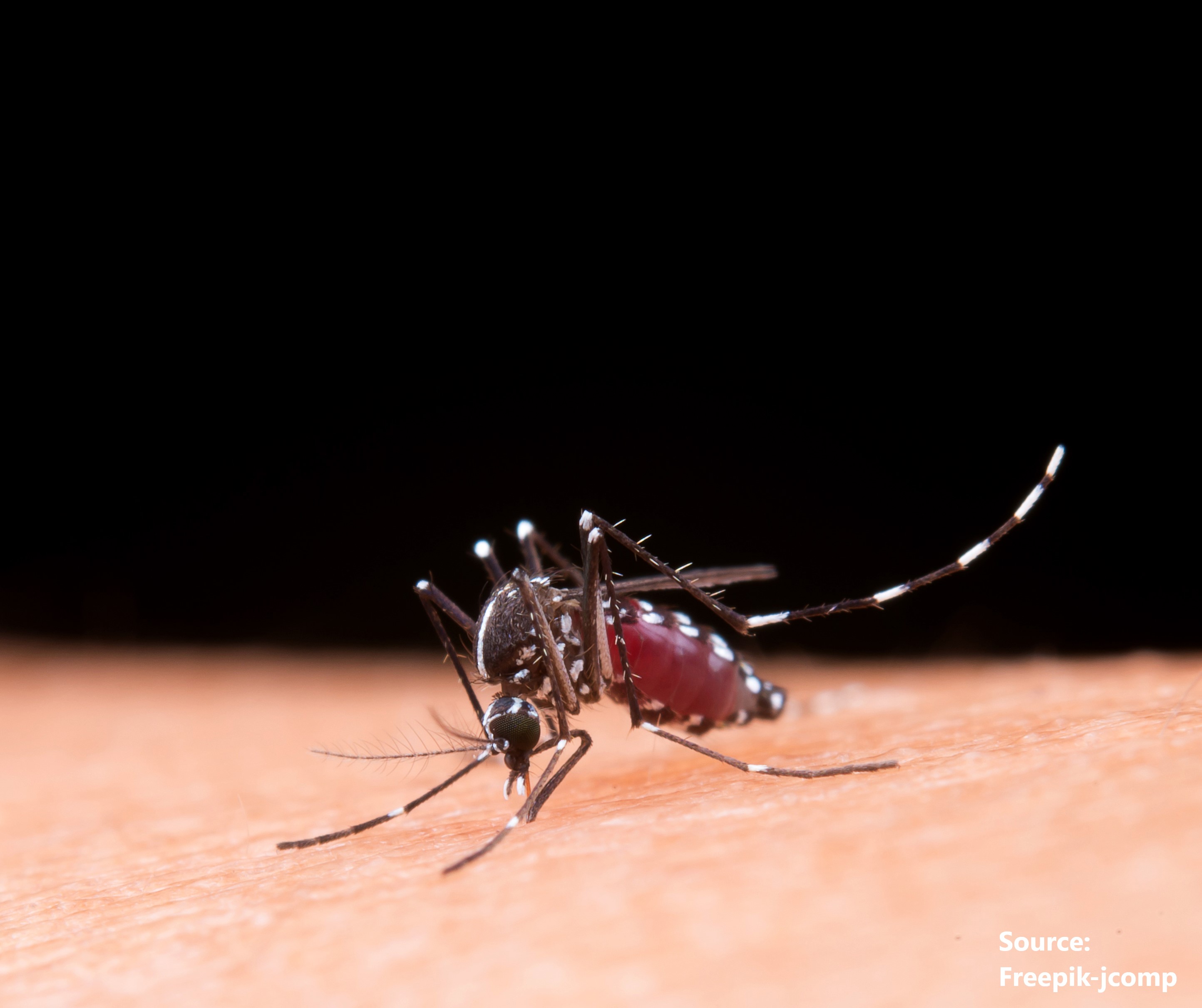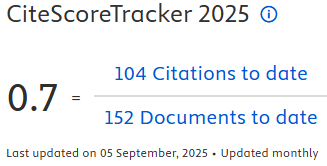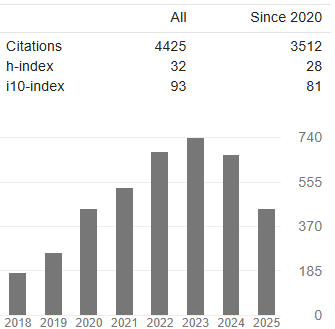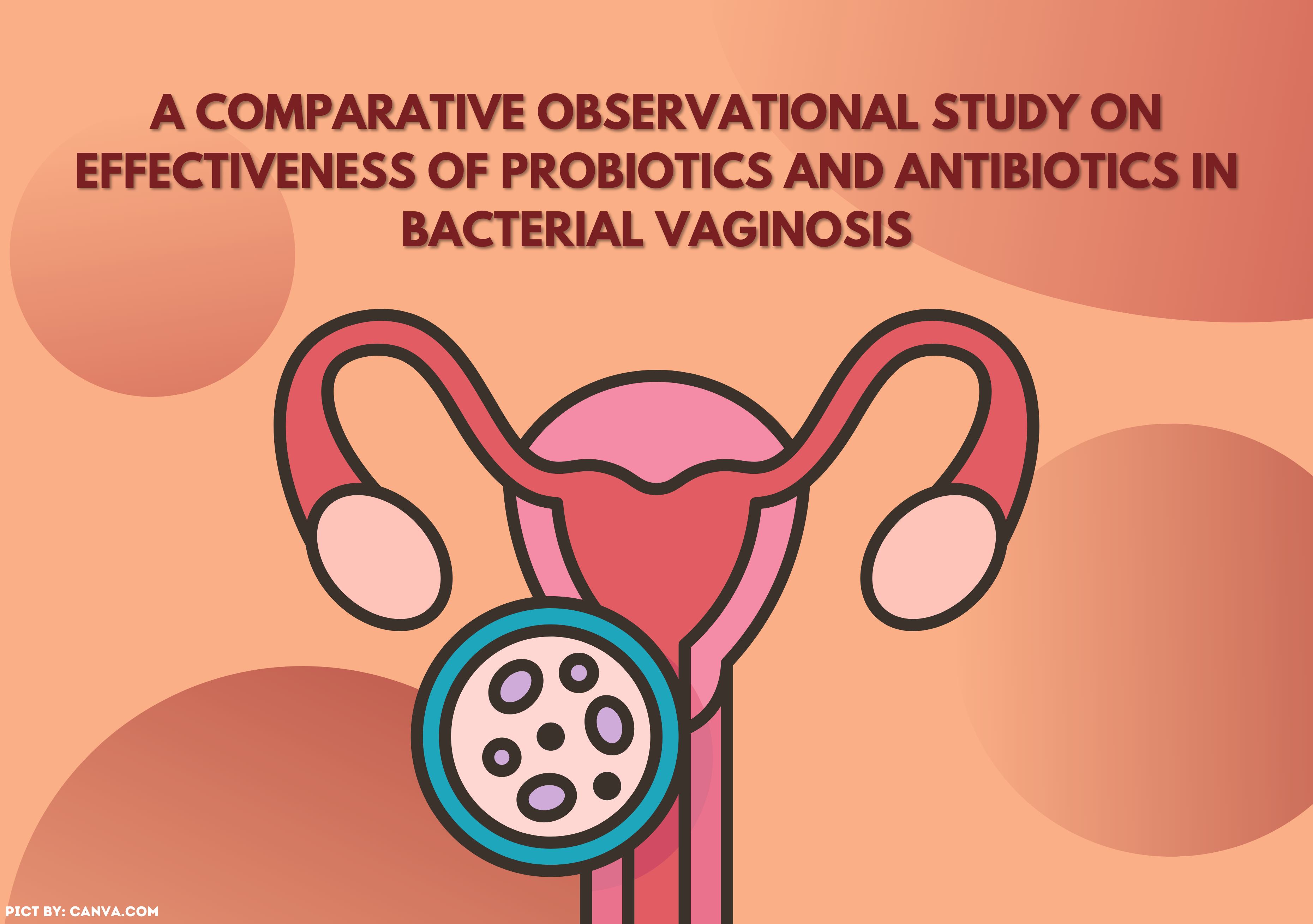CORRELATION OF FREE LARVAE INDEX AND POPULATION DENSITY WITH DENGUE FEVER INCIDENCE RATE

Introduction: Dengue Hemorrhagic Fever (DHF) is a disease caused by the dengue virus that infects the body. Dengue is a common viral infection in warm tropical climates. The infection is caused by one of four closely related dengue viruses. The disease now plagues many countries and even more than 100 countries within the WHO, including Africa, the Americas, the Eastern Mediterranean, Southeast Asia, and the Western Pacific. The Americas, Southeast Asia, and the Western Pacific are the most severely affected regions, with Asia representing 70% of the global disease burden. The high incidence rate of DHF in various regions of Indonesia is the background by several factors, one of which is the density of the seaters. The aim of this study was to analyze the correlation between population density and larvae free index and Incidence Rate (IR) Dengue Hemorrhagic Fever (DHF) in Blitar Regency in 2013-2017. Methods: The data were analyzed quantitatively using Spearman correlation tests to analyze relationships between variables. Result: The results of the analysis found there was no correlation between dengue fever incidence rate and larvae free index (p = 0.603 r = -0.117), and there was a correlation between the incidence rate of dengue fever and population density (p = 0.002 r = 0.619). Conclusion: High population density is a risk factor for DHF events in Blitar Regency, so there needs to be an anticipation of preventive measures such as the implementation of 3M and counseling of the impact of high population density.
Anggraini, S., 2018. The Existance of Larvae and Dengue Fever Incidence in Kedurus Sub-District in Surabaya. JKL, Volme. 10, No. 3, 252-258. https://doi.org/10.20473/jkl.v10i3.2018.252-258
Ashlihah, S., Indriani, C., Lazuardi, L., 2016. Pola spasial-temporal kejadian demam berdarah dengue di kota Palopo. BKM Journal of Community Medicine and Public Health, Vol. 32, No. 2, 45-52. https://doi.org/10.22146/bkm.6861
CDC, 2010. Dengue and the Aedes albopictus mosquito. Center for Disease Control and Prevention (CDC).
Chandra, E., 2019. Pengaruh Faktor Iklim, Kepadatan Penduduk dan Angka Bebas Jentik (ABJ) Terhadap Kejadian Demam Berdarah Dengue (DBD) di Kota Jambi, Vol. 1, No.1, 1-15. https://doi.org/10.22437/jpb.v21i1.5101
Blitar District Level Health Office, 2017. Blitar District Health Profile 2016. Blitar District level Health Office.
West Java Provincial Health Office, 2018. Health Profile of East Java Province 2018. East Java Provincial Health Office.
Directorate General of Disease Control and Environmental Health, 2011. Dengue Hemorrhagic Fever Control Module.
Directorate General of Disease Control and Environmental Health. Indonesian Ministry of Health, Jakarta.
Directorate General of Disease Control and Environmental Health, 2007. Ecology and Aspects of Vector Behavior.
Directorate General of Disease Control and Environmental Health. Indonesian Ministry of Health, Jakarta
Ghafarul, W., 2015. Pemodelan Kejadian Demam Berdarah Dengue (DBD) Berdasarkan Faktor Ketinggian Tempat, Iklim dan Angka Bebas Jentik (ABJ) di Kabupaten Magetan. Universitas Airlangga.
Handayani, S., Fannya, P., Roza, S.H., Angelia, I., 2017. Analisis Spasial Temporal Hubungan Kepadatan Penduduk Dan Ketinggian Tempat Dengan Kejadian DBD Kota Padang, Vol. 8, No.10, 25-34.
Haryanto, B., 2018. Indonesia Dengue Fever: Status, Vulnerability, and Challenges. Intech Open, 81–92. https://doi.org/10.5772/intechopen.82290
Hasan, S., Jamdar, S.F., Alalowi, M., 2016. Dengue virus: A global human threat: Review of literature, Vol. 6, No.1, 1-6.
Indonesian Ministry of Health , 2018. Indonesia Health Profile 2018. ppm and PLP, Jakarta.
Indonesian Ministry of Health, 2016. Infodatin: DHF situation in Indonesia. Indonesian Ministry of Health, Jakarta.
Kinansi, R.R., Widjajanti, W., Ayuningrum, F.D., 2017. Kepadatan Jentik Vektor Demam Berdarah Dengue di Daerah Endemis di Indonesia (Sumatera Selatan, Jawa Tengah, Sulawesi Tengah Dan Papua), Vol. 16, No. 1, - 9.
Kurniawati, N.T., Yudhastuti, R., 2016. Hubungan Iklim dan Angka Bebas Jentik dengan Kejadian Demam Berdarah Dengue di Puskesmas Putat Jaya. Vol. 5, No. 2, 157-166.
Kurniawati, R., Wati, D.M., Ariyanto, Y., 2015. Analisis Spasial Sebaran Kasus Demam Berdarah Dengue (DBD) di Kabupaten Jember Tahun 2014, 1-7.
Masrizal, Sari, N.P., 2016. Dengue Fever Case Analysis Based on Elements of The Climate and Population Density Through Gis Approach in Tanah Datar. Jurnal Kesehatan Masyarakat Andalas, Vol.10, No. 2, 166-171.
Murdani, A., Martini, S., Purnomo, W., 2017. Pemetaan Kejadian DBD Berdasarkan Angka Bebas Jentik dan Jenis Infeksi Virus Dengue.
Nandini, D.M., Susilowati, M.H.D., 2017. Perbandingan Wilayah Penyakit Demam Berdarah Dengue (DBD) di Jakarta Tahun 2005 - 2015. IRONS, 435-443.
Nisa, H., 2015. Epidemiologi Penyakit Menular. UIN Jakarta Press, Jakarta.
Paomey, V.C., Nelwan, J.E., Kaunang, W.P.J., 2019. Sebaran Penyakit Demam Berdarah Dengue Berdasarkan Ketinggian dan Kepadatan Penduduk di Kecamatan Malalayang Kota Manado Tahun 2019, Vol. 8, No. 6, 521-527.
Paruntu, C., Ratag, B.T., Kaunang, W.P.J., 2018. Gambaran Spasial Kondisi Lingkungan Penyakit Demam Berdarah Dengue di Kota Bitung Tahun 2018, Vol.7, No. 5.
Pongsilurang, C.M., Sapulete, M.R., Kaunang, W.P.J., 2015. Pemetaan Kasus Demam Berdarah Dengue di Kota Manado. Jurnal Kedokteran Komunitas dan Tropik, Vol. 3, No. 2. 66-72.
Prasetyowati, A., Kushartanti, R., 2019. Kajian Epidemiologi Kejadian Demam Berdarah Dengue di Wilayah Kerja Puskesmas Rowosari Kota Semarang, Vol. 2, No. 2, 23-29.
Qi, X., Wang, Y., Li, Y., Meng, Y., Chen, Q., Ma, J., Gao, G.F., 2015. The Effects of Socioeconomic and Environmental Factors on the Incidence of Dengue Fever in the Pearl River Delta, China, 2013. PLoS Negl Trop Dis. Vol. 9, No. 10, 1-13, e0004159. https://doi.org/10.1371/journal.pntd.0004159
Rahmi A.R, Sari, P., 2017. Relationship Between The Population Density and The Occurrence of Dengue Hemorrhagic Fever In Palu At 2010-2014. Medika Tadulako, Vol. 2, No. 1, 49–58.
Ratri M, A., Wahyuningsih, N.E., Murwani, R., 2017. Hubungan Kepadatan Hunian dengan Kejadian Demam Berdarah Dengue di Semarang. Jurnal Kesehatan Masyarakat, Vol. 5, No. 5, 434–440.
Ridha, M.R., Rahayu, N., Rosvita, N.A., Setyaningtyas, D.E., 2013. Hubungan Kondisi Lingkungan dan Kontainer dengan Keberadaan Jentik Nyamuk Aedes Aegypti di Daerah Endemis Demam Berdarah Dengue di Kota Banjarbaru. Jurnal Epidemiologi dan Penyakit Bersumber Binatang, Vol. 4, No. 3, 133–137.
Setiawan, B., Supardi, F., Bani, V.K.B., 2017. Analisis Spasial Kerentanan Wilayah Terhadap Kejadian Demam Berdarah Dengue di Wilayah Kerja Puskesmas Umbulharjo Kota Yogyakarta Tahun 2013. Jurnal Vektor Penyakit,Vol.11, No. 2, 77–87. https://doi.org/10.22435/vektorp.v11i2.6464.77-87
Setyaningsih, W., Setyawan, D.A., 2014. Pemodelan Sistem Informasi Geografis (Sig) pada Distribusi Penyakit Demam Berdarah Dengue (DBD) di Kecamatan Karangmalang Kabupaten Sragen. Jurnal Terpadu Ilmu Kesehatan, Vol. 3, No. 2, 106–114. http://dx.doi.org/10.30633/88122017201725-34ni, E.T., 2018. Gambaran Kasus Demam Berdarah Dengue di Kota Blitar Tahun 2015-2017, Vol. 6, No. 3, 260–267. https://doi.org/10.20473/jbe.v6i3.2018.260-267
WHO, 2020. Dengue and Severe Dengue. World Health Organization. URL
Copyright (c) 2022 The Indonesian Journal of Public Health

This work is licensed under a Creative Commons Attribution-NonCommercial-ShareAlike 4.0 International License.
- The authors agree to transfer the transfer copyright of the article to The Indonesian Journal of Public Health effective if and when the paper is accepted for publication.
- Authors and other parties are bound to the Creative Commons Attribution-NonCommercial-ShareAlike 4.0 International License for the published articles, legal formal aspect of journal publication accessibility refers to Creative Commons Attribution-NonCommercial-ShareAlike 4.0 International License (CC BY-NC-SA), implies that:
- Attribution ” You must give appropriate credit, provide a link to the license, and indicate if changes were made. You may do so in any reasonable manner, but not in any way that suggests the licensor endorses you or your use.
- NonCommercial ” You may not use the material for commercial purposes.
- ShareAlike ” If you remix, transform, or build upon the material, you must distribute your contributions under the same license as the original.































